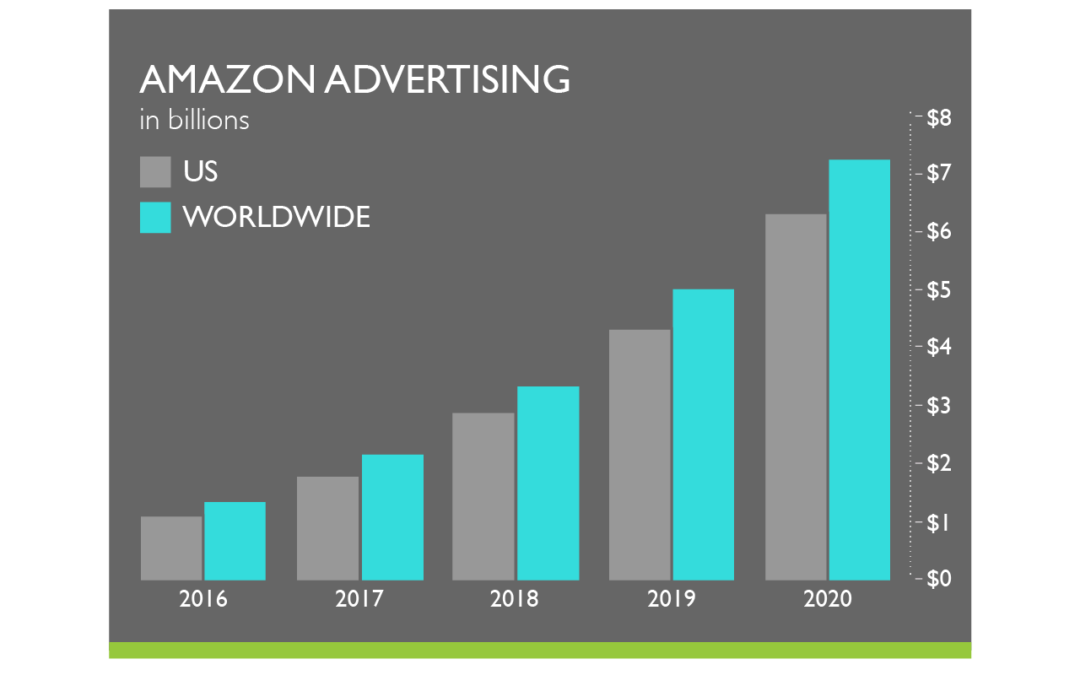
Being a successful Amazon advertiser can be a bit like hitting a moving target; hard to pin down, but when you do…oh so worth it. There are a myriad of changes that affected Amazon advertisers in 2019 that will change how you do business in 2020…let’s look at some of the most important ones:
1. SPONSORED PRODUCT AD TARGETING FOR CATEGORIES
This change is huge. You can now compete against your competition that might sell more units, but you can win based on things like higher review ratings. For example, you can create an ad for a similar product and convince a consumer to use you with your 4.7-star rating to buy your product instead of the vendor with a 4-star rating.
You can also target your ads based on things like price range. This means you can more carefully target your ads instead of going for a blanket approach that hopes for the best.
2. SPONSORED PRODUCTS—SUGGESTED BIDS
It can be scary to go so granular that your ads become so complex that you aren’t sure if they will work (which means not only lost revenues but over spending…a double hit). However, suggested bids can remove much of the guesswork, and can improve profitability of your sponsored items.
3. SPONSORED PRODUCTS—NEGATIVE TARGETING
Negative is a ‘negative’ word…unless you’re working via Amazon. By excluding brands and products that you know you don’t convert well against you can positively increase your results. For those with a Seller Central, Vendor Central or Ad Console account, you can leverage this to ensure you’re only showing up on the similar products that you have an advantage and higher conversion rates over.
4. THE ASIN HARVESTING APPROACH
Amazon’s ASINs (Amazon Standard Identification Number) drill heavily down to specific products, which empowers you to target your similar product to your competitor’s audience. The ability to harvest this data will play a key role in your success in 2020…especially since ASINs now show up in your search term reports. By keeping category- and product-targeting campaigns separate you can get better data and results.
One key thing to keep in mind however is that ASIN numbers are unique on the different Amazon sites (different countries most notably).
5. THE DEFENSIVE APPROACH
Targeting competitor ASINs is the offensive approach, but while you’re running offense you still need a great defense. Running product campaigns in the Sponsored Products carousel section means your own products will show instead of your competitors. Combining this with the info in point 4 you can have your products showing in not only your carousel…but your competitors as well.
The defensive approach is especially important for new products (or products you’re launching a new campaign for) that you want an aggressive launch for.
Another benefit of the defensive approach is that you and cross sell and up sell.
Ninja-like tip: piggyback on the success of your established ASIN to get more traffic to your newly launched item(s).
6. AMAZON DECIDES YOUR DISPLAY BASED ON ASINS
Should you decide to enable ASIN optimization, Amazon will select for you the most contextually relevant products and make that what your end user sees. This will create a new creative that is dynamic for your viewers based on their searches.
While that lack of control may be troublesome for some, their algorithm focuses on things like relevancy and overall metrics of your Amazon store and landing pages. For those with solid metrics this can be a dynamic option.
7. POWERFUL BRAND ANALYTIC DATA
The information now available to Amazon Brands in their Vendor Central and Seller Central consoles is incredible. You can look at demographic data like age, gender, income (household), marital status—and most importantly item-comparison and alternative-purchase tracked behaviours. This allows you to more carefully outline your typical client demographic and behavioural profile (which if you aren’t doing already—it will rock your Amazonian world).
8. VIRTUAL KIDS AND BUNDLES—REFRESHING THE OLD!
You can leverage virtual kits and bundles to turn existing products into new ASINs (SKUs). By bundling or ‘kitting’ items you can move individually stored items into product combinations and increase your search display results.
Amazon launched a beta for this for their FBA vendors in 2019…watch for this in 2020.
9. DROPSHIP AUTOMATION!
Amazon’s automation in terms of dropshipping is really upping the game. Previous challenges have been in updating quantities for ASINs, managing profit margins, real-time ordering to suppliers and live tracking number updating from suppliers. Amazon’s updated dropshipping capabilities however have gotten better—and 2020 will be their best year yet. They are still not perfect, but their automation programs are improving to the point that you can maintain your seller rating.
Amazon upped their game in 2019, which empowers you to do the same in 2020.






Blog Comments